Haiti and hurricanes
by Willow Murton, Assistant Producer, Oceans/Jungles team
Leaving Haiti I say my goodbyes and hope that I don’t visit the people that I have come to know again this year. For the first time after a recce, I really do hope that I don’t come back. Because if I do, it means the people of Haiti will have been hit yet again by a destructive storm.
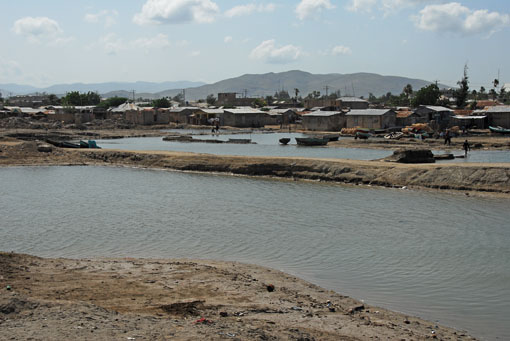
The calm after the storm - Gonaives, Haiti
For many people, Haiti is synonymous with violence, gun fire cracking over destitute slums, the sound of voodoo drums, a dark mysticism. When I said that I was coming here, some friends looked at me with envy and said that they had always dreamt of going on holiday to Tahiti. Those who heard right looked at me with curious interest and concern. Their eyes were full of the preconceptions that spring from a country whose history begins for many with disease and exploitation. More recently, it has been written by the devastating statistics of its poverty and the language of disaster in the face of social unrest and tropical storms which have hit the country. And so I set off, with the envious gaze of the mistaken and the worried glances of the better informed.
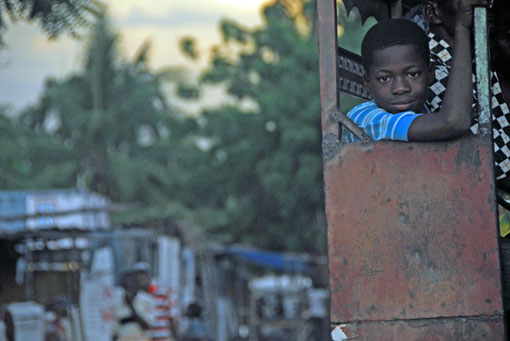
Passenger on a bus in Port-au-Prince
Recces are one of the best parts of this job. You get to be professionally nosey and personally privileged in places that you would never visit otherwise. This is certainly one trip that I would not have imagined making and it still does not feel real until the doors of Port-au-Prince airport open. The tensions and aggressions that I expected to meet me in the Haitian capital are nowhere to be seen. I am struck by the apparent calm, masked in the chaotic bustle of the traffic and roadside. A bored UN policeman, a check point on a road dented with potholes, intercut with colourful tap-tap pick-ups crammed with people. Whilst I have a glimpse of the reality of life about me, I too am on the sidelines, looking out at the passing world. This feeling comes back to me time and time again on the trip. Perhaps it is the distance between the cool air-conditioned rooms of the hotels where we stay at night and the hot, dusty shacks that we visit in the day.
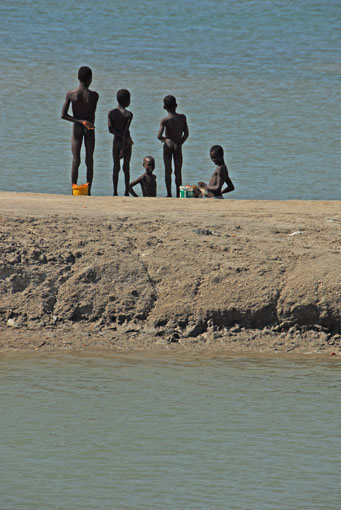
Boys standing on flooded salt ponds
The shoot however will be an immersion, literally. Following a family through a storm and following floods is not something that is easy to plan. I have become an amateur storm chaser, scouring weather charts and learning the grammar of waves and wind. For all the guidance that I am given, there is no way to predict the track of the storms with any certainty. Had there been a way, the people of Gonaives would surely not have found themselves so unprepared for the four storms that struck the town last year, bringing deadly floods and taking lives and homes.
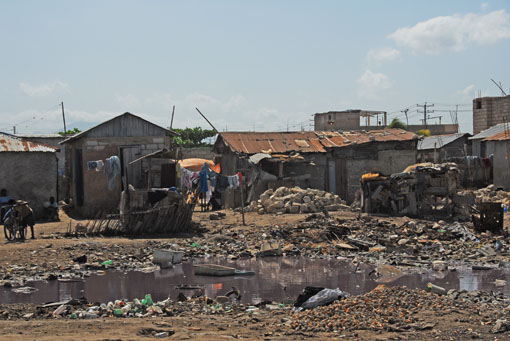
Devastation in Gonaives after last year's floods
Mountains of dusty rubble dug from the houses still sit in the streets, flanked by blocked canals, lottery stalls and the wrecked shells of cars. At the edge of the ocean, a small group of fishermen gather, making boats and talking, as children and pigs run about amongst piles of empty conch shells. A little boy flies a kite, made from a plastic bag, over a cluster of ramshackle huts. On a door, the words “Site Ana” are sprayed. The settlement is new, named after the storm, Hurricane Hanna, that took the previous homes of the settlers. Children swim in the pools of water beyond, around the ruins of a building she flooded. Crude fishing boats sail out over former salt plots. Life continues in the remains of the storms.
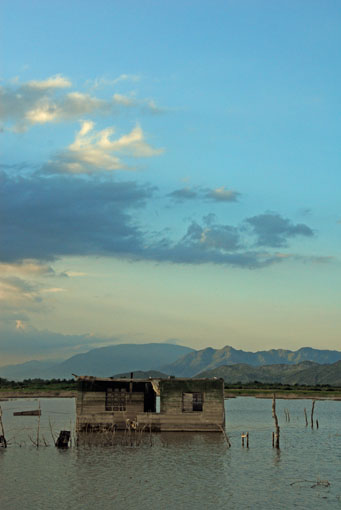
A flooded house a year after last year's floods
There is an inevitability to the fate of the people who live here which is openly admitted. It is disarming. They have no choice but to stay, to adapt, to reclaim the small spaces of land, the snatches of life that they can. Last year, the families in some corners of Gonaives spent months living on roof tops. Neighbours who had houses with two storeys offered shelter to those without. Fear, loss and finally survival were shared under stormy skies. I still have no idea what story we will be able to tell this year but I hope that it is one which finds that same strength of humanity in the eye of a storm I pray never comes, even if the cold statistics say it will.
Dale Templar - Series Producer - Not so Natural Disasters
When Willow came back from Haiti last week and showed me the photos of Gonaives I was instantly transported back. I have location directed two films telling the stories of the aftermath of what we call a “natural disaster”. The first was the 1995 Kobe Earthquake in Japan. The second was the more recent tsunami, where I filmed in Banda Ache in northern Sumatra, the place where quarter of a million men, women and children perished. Like Haiti, Ache was already classed by the BBC as a “hostile environment” even before the disaster. As I travelled from the airport, which was inland and relatively untouched, we headed towards the coast. Soon the twin natural forces of both a powerful earthquake and the massive tsunami waves started to reveal themselves. I was prepared for the earthquake ruin, I’d seen so much in Kobe but I wasn’t prepared for the scene as I neared the coast. A few months earlier this had been a packed fishing community. Well over a kilometre from the sea shore, there was nothing, just nothing. The ocean had taken everything. When I saw Willow’s recce material the memories of Ache came back, I understood her confusion and disbelief.
It’s called a natural disaster for good reason but when you see it for yourself there is something so viscerally un-natural about it. Somehow it just isn’t right, isn’t possible. On both occasions I was telling the story of the people who had against the odds survived the very worst nature could throw at them. You come away with an insight into two of the great strengths on this Earth, the force of nature itself and the power of humanity.

Willow rocks!
sumatera adalah pulau yang kaya sumber daya alam